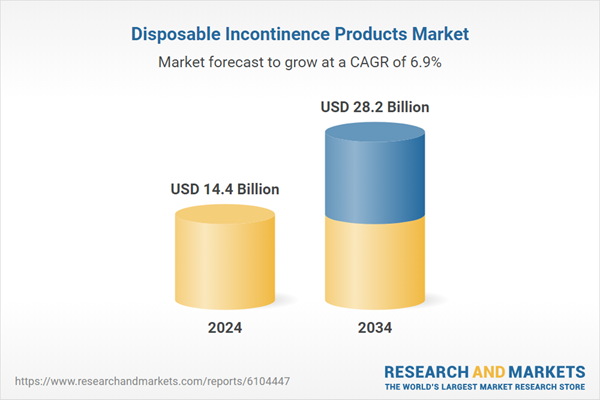This consistent market expansion is fueled by the growing number of individuals experiencing urinary incontinence, rising awareness regarding treatment and management options, and continuous product advancements by manufacturers. Companies are prioritizing innovation in materials that are not only highly absorbent and skin-compatible but also biodegradable, aligning with both healthcare efficacy and environmental responsibility. In addition, the growth of e-commerce has simplified purchasing processes, enabling users to obtain products discreetly. This combination of convenience, functionality, and accessibility is accelerating demand across multiple care settings, from hospitals to home environments, contributing to the overall growth trajectory of the market.
Disposable incontinence solutions are designed to help individuals manage involuntary bladder or bowel leakage through products such as absorbent pads, adult briefs, and protective garments. These items enhance comfort, dignity, and hygiene, especially for elderly users, post-surgical patients, and people with chronic incontinence. Designed for easy use and disposal, they serve both clinical and home care needs, offering reliable absorption and minimal discomfort.
The protective incontinence garments segment led the market and was valued at USD 12.1 billion in 2024, owing to its wide adoption and ease of use. These garments are preferred across hospitals, long-term care centers, and homes due to their reliable performance and comfort. Their absorbent, hygienic, and leak-resistant structure helps users maintain an active and confident lifestyle. They are available in multiple formats to address varying severity levels of incontinence, which enhances their appeal to both patients and caregivers.
Urine incontinence segment held a 56.7% share in 2024. Its high prevalence and persistent nature across aging populations significantly contribute to product demand. Effective solutions are necessary to manage prolonged episodes of urine leakage, with disposable incontinence products offering a practical and hygienic option. The growing number of elderly individuals dealing with such health concerns continues to boost the segment’s prominence in the market.
United States Disposable Incontinence Products Market was valued at USD 2.7 billion in 2024. Increasing cases of stress urinary incontinence, especially among aging women, are pushing product demand. Factors such as menopause, obesity, and childbirth have contributed to pelvic floor complications, prompting women to seek treatment. The availability of advanced healthcare facilities, greater pelvic health awareness, and favorable reimbursement systems are further supporting market expansion in the country.
Key players in the Global Disposable Incontinence Products Market include Essity, BD, Coloplast, CardinalHealth, B Braun, Ontex, Attends, FUBURG, UROCARE, MEDLINE, Kimberly-Clark, convaTec, ABENA, unicharm, and Hollister. Companies in the disposable incontinence products space are enhancing their market position by focusing on product innovation, sustainability, and distribution expansion. Many are investing in R&D to develop eco-friendly materials, odor-control technology, and ultra-thin, high-absorption products that increase user comfort and discretion.
To meet the evolving needs of aging populations, players are launching tailored product lines catering to different levels of incontinence severity. Strategic collaborations with healthcare providers and caregivers help promote early adoption. Additionally, firms are expanding their online presence to offer subscription-based models and discreet delivery services, which resonate with modern consumer preferences.
Comprehensive Market Analysis and Forecast
- Industry trends, key growth drivers, challenges, future opportunities, and regulatory landscape
- Competitive landscape with Porter’s Five Forces and PESTEL analysis
- Market size, segmentation, and regional forecasts
- In-depth company profiles, business strategies, financial insights, and SWOT analysis
This product will be delivered within 2-4 business days.
Table of Contents
COMPANIES MENTIONED
The companies featured in this disposable incontinence products market report include:- ABENA
- Attends
- B Braun
- BD
- CardinalHealth
- Coloplast
- convaTec
- essity
- FUBURG
- Hollister
- Kimberly-Clark
- MEDLINE
- Ontex
- unicharm
- UROCARE
Table Information
| Report Attribute | Details |
|---|---|
| No. of Pages | 200 |
| Published | June 2025 |
| Forecast Period | 2024 - 2034 |
| Estimated Market Value ( USD | $ 14.4 Billion |
| Forecasted Market Value ( USD | $ 28.2 Billion |
| Compound Annual Growth Rate | 6.9% |
| Regions Covered | Global |
| No. of Companies Mentioned | 16 |









